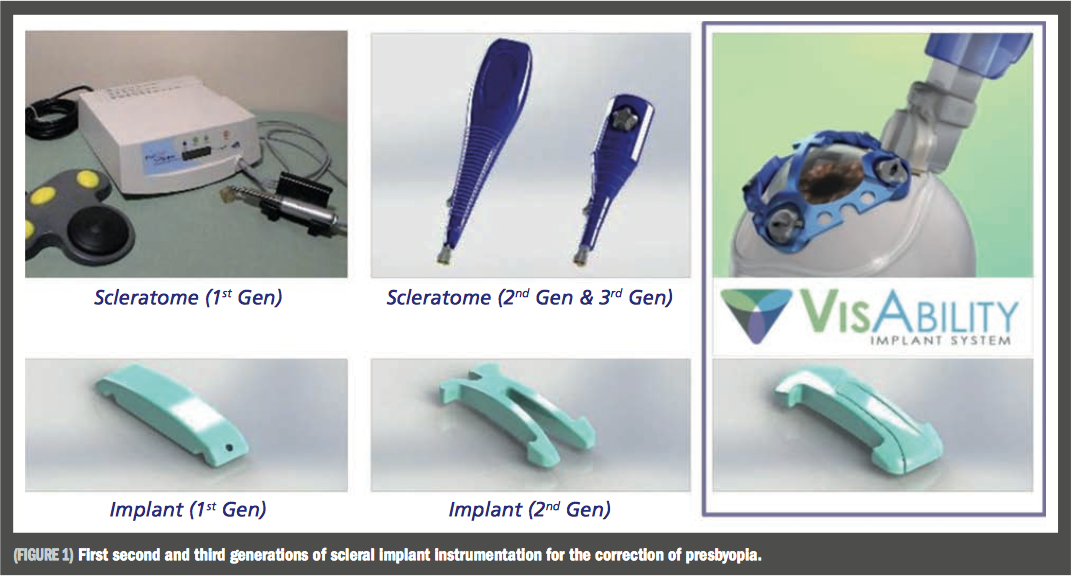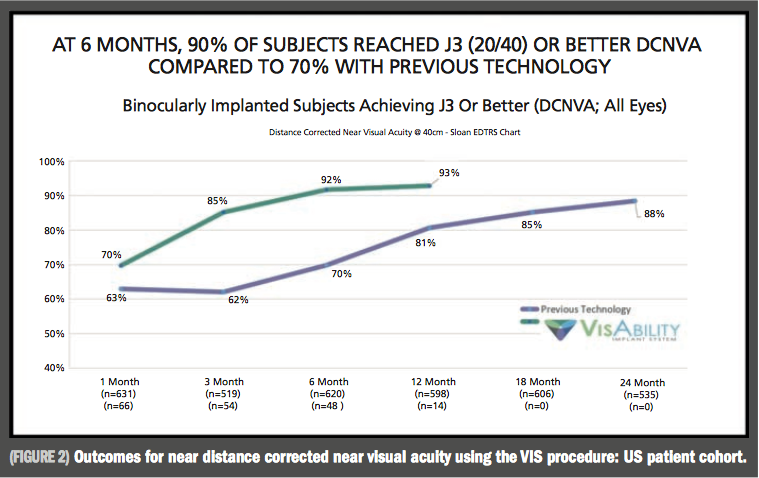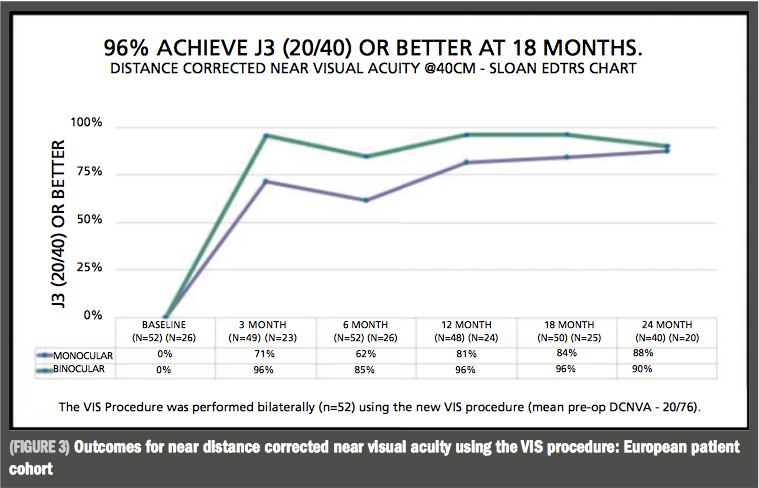Article
Improving the precision and consistency of scleral implant surgery
Author(s):
Since scleral implant surgery for presbyopia correction was first introduced, numerous enhancements have standardized and simplified the procedure. In this article, Dr Cummings discusses binocular visual improvement outcomes observed with a new generation implant system, and explains which patients may benefit from the procedue.
Take-home message: Since scleral implant surgery for presbyopia correction was first introduced, numerous enhancements have standardized and simplified the procedure. In this article, Dr Cummings discusses binocular visual improvement outcomes observed with a new generation implant system, and explains which patients may benefit from the procedue.
By Dr Arthur Cummings, FRCSEd
Since scleral implant surgery for presbyopia correction was first introduced, there have been numerous enhancements in implant design, instrumentation, and technique that have standardized and simplified the procedure. The VisAbility Implant System (Refocus Group, Inc. Dallas, Texas, US) is a complete presbyopia correction that is made up of the VisAbility Implants and the VisAbility Incision System (VIS - consisting of the VIS Docking Station and VIS Sclerotome) (Figure 1).

Next generation system for presbyopia correction
The VIS Procedure is performed using the VIS Docking Station, which “locks” onto the sclera using four-point fixation (after conjunctival peritomy). The docking station fixes at the limbus, holds the eye steady, and eliminates the need for manual marking of the scleral tunnel sites. The VIS Docking Station serves as a guide for the disposable VIS Sclerotome so it can “dock” into position. Once the docking station is in place, the VIS sclerotome is used to create the four uniform tunnels in each quadrant of the eye, with each incision measuring 400 microns deep, 4 mm long and 4 mm from the limbus oriented tangentially. The added benefits of the disposable sclerotome are that it is easy to use (lightweight and ergonomic) and less surgeon dependent.
Once the tunnel is created, the 2-piece PMMA implant is pulled into place by a shuttle assembly and held in place using the locking insert. The minimally invasive procedure typically takes 15-20 minutes per eye in experienced hands. In European sites tissue glue is used for hemostasis and to close and seal the conjunctiva once the implants are in place, which further increases comfort and improves recovery time. These improvements in surgical instrumentation and techniques have resulted in better tunnel consistency (location, length and depth), shorter surgical time, and quicker recovery and have standardized implantation outside the visual axis.
Binocular improvement of near and intermediate vision
The VIS procedure for the correction of presbyopia works in theory by increasing the space surrounding the ciliary muscle and reducing the crowding of the underlying ciliary muscle to restore effective ciliary muscle function and hence accommodation.
In Europe, outcomes performed using the CE marked VisAbility System were analysed using data from 66 eyes (33 patients) that underwent the binocular procedure 1 month after surgery. Near distance corrected near visual acuity (DCNVA) was J3 or better in 70% of eyes (monocular) and the proportion of eyes achieving that outcome increased to 85% at 3 months, 92% at 6 months and 93% and 12 months.1
The European VIS procedure outcomes were compared with results from eyes enrolled in the US FDA investigational device examption study, which included previous versions and earlier generation technology. In the US IDE cohort, only 63% of eyes achieved J3 or better DCNVA at 1 month and while the proportion of eyes achieving that outcome increased to 81% at 12 months, the VIS procedure showed more patients are achieving J3 or better distance corrected near visual acuity (DCNVA) sooner after their surgery (Figure 2).2 Binocular DCNVA was even better with 96% of patients in the European cohort reading J3 or better at 3 months (Figure 3).


Patient suitability
The procedure’s biggest advantages are that it does not involve the visual axis and that there is no loss of distance vision or contrast sensitivity. The VIS procedure avoids many of the optical issues associated with other presbyopia-correcting strategies, and is unique in its negligible impact on distance vision, binocularity, or quality of vision, which can be challenging with monovision or multifocal strategies.
The VisAbility procedure is particularly advantageous for emmetropic and post-LASIK presbyopes between 45 and 60 years old. These are patients who have already demonstrated that they are unwilling to wear spectacles and are not overly keen on IOL surgery or monovision strategies, hence their choosing LASIK in the first instance. These patients are also more challenging to treat with IOL technology due to reduced refractive predictability post-LASIK for IOL power selection. In the event that a patient is disappointed with the results or procedure, the implants are easily removable and patients can elect to return to their original state. Patients with this procedure should be able to go on to have routine cataract surgery and other refractive procedures without any problems. Some of my patients may occasionally rely on +0.50D or +0.75D reading glasses, especially immediately after surgery, but satisfaction in the outcomes has been acceptable. If patients are given realistic expectations, the procedure can be very satisfactory.
While surgeons have numerous options for the correction of presbyopia in patients who wish to decrease their necessity for reading glasses, the VIS procedure is proving to be a promising addition and has demonstrated the capacity to successfully restore or improve accommodative abilities and improve near vision without any compromise for distance vision.
References
- 1. J. Meyer. Changes to Preferred Near Distance using Scleral Implants for the Treatment of Presbyopia: Preliminary Findings. Presented at the Meeting of the European Society for Cataract and Refractive Surgery, Amsterdam, Netherlands, October, 2013.
- 2. D. Schanzlin. Soloway, B. Multicenter FDA Clinical Trial of Treatment of Presbyopia Using Scleral Implants: Preliminary Findings. Presented at the ASCRS Symposium on Cataract, IOL and Refractive Surgery , San Francisco, USA, April, 2014.
Dr Arthur Cummings FRCSEd
E: abc@wellingtoneyeclinic.com
Dr Arthur Cummings works at the Wellington Eye Clinic and Beacon Hospital, Dublin, Ireland.
The author has no financial interests to disclose relating to subject matter of this article.
Newsletter
Don’t miss out—get Ophthalmology Times updates on the latest clinical advancements and expert interviews, straight to your inbox.





